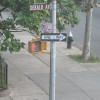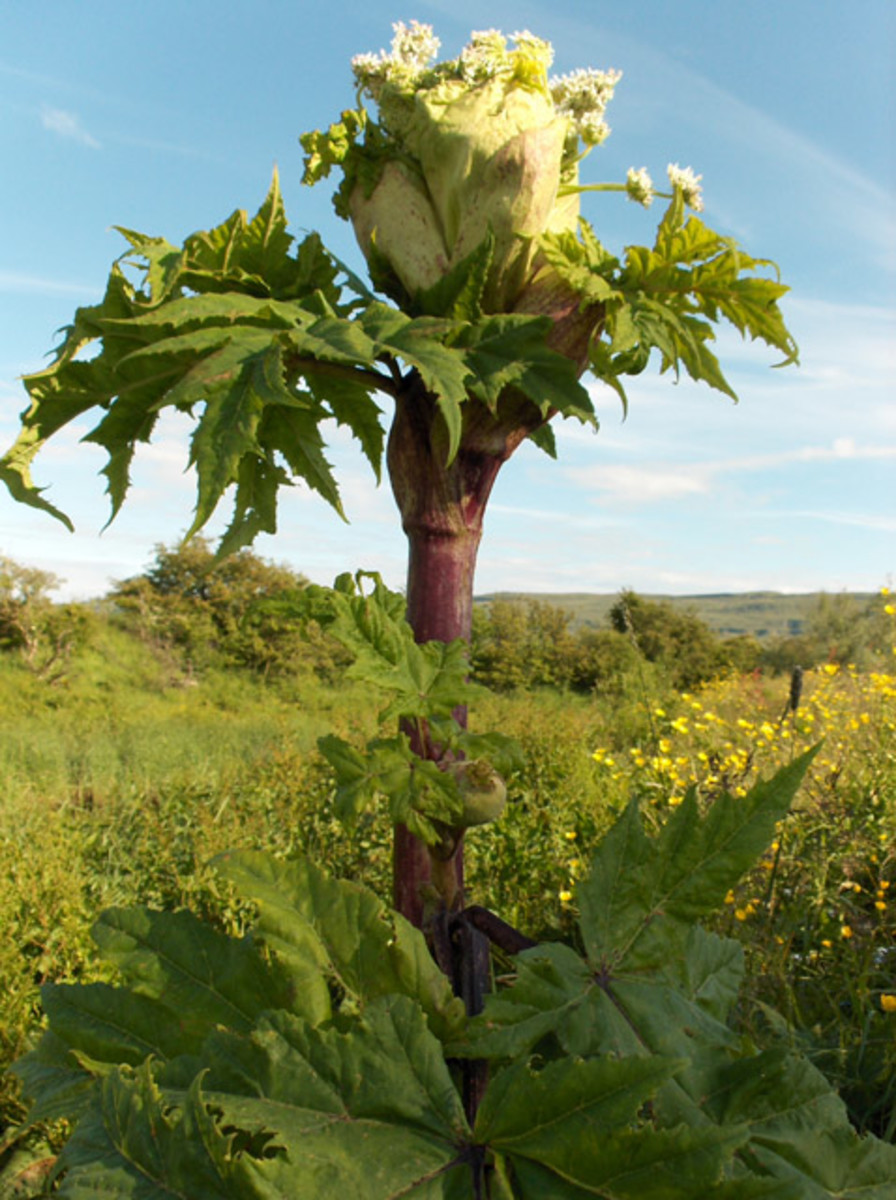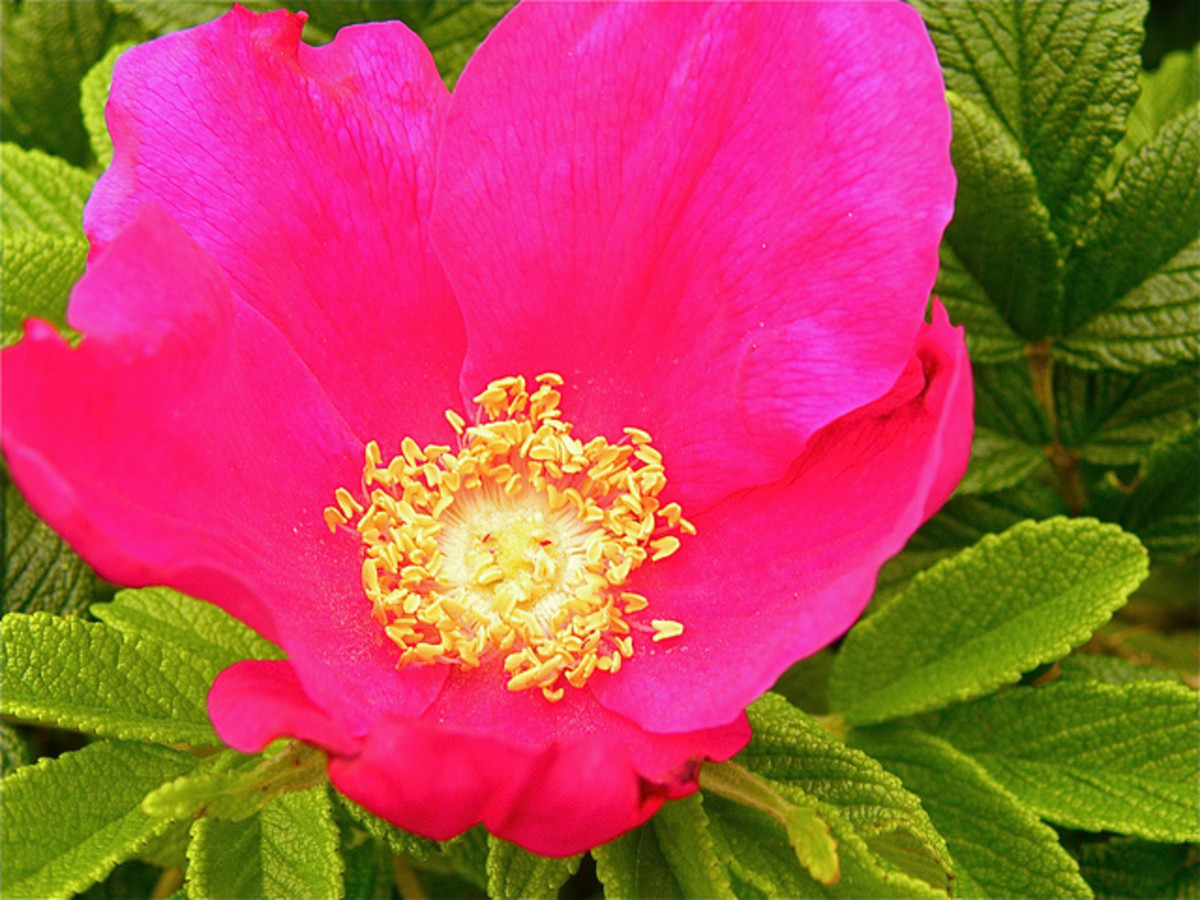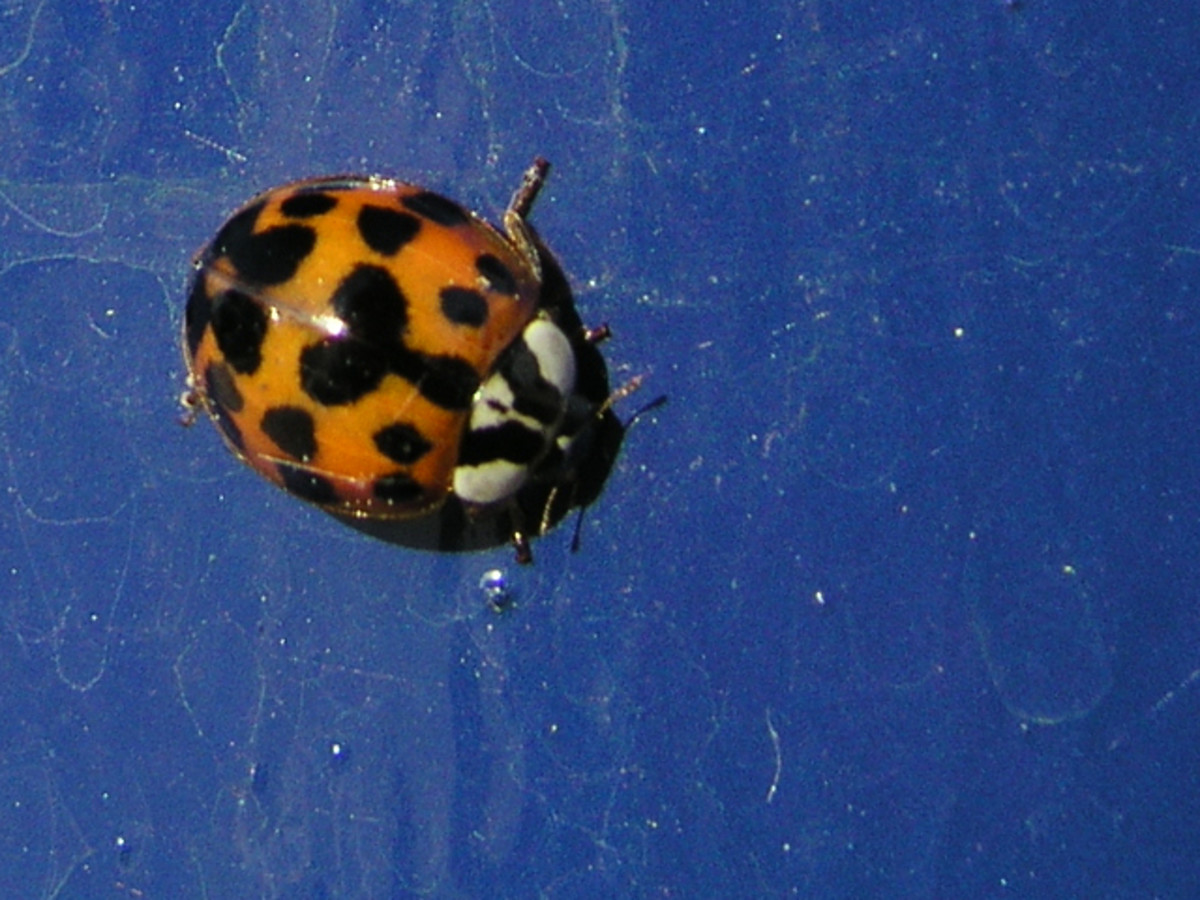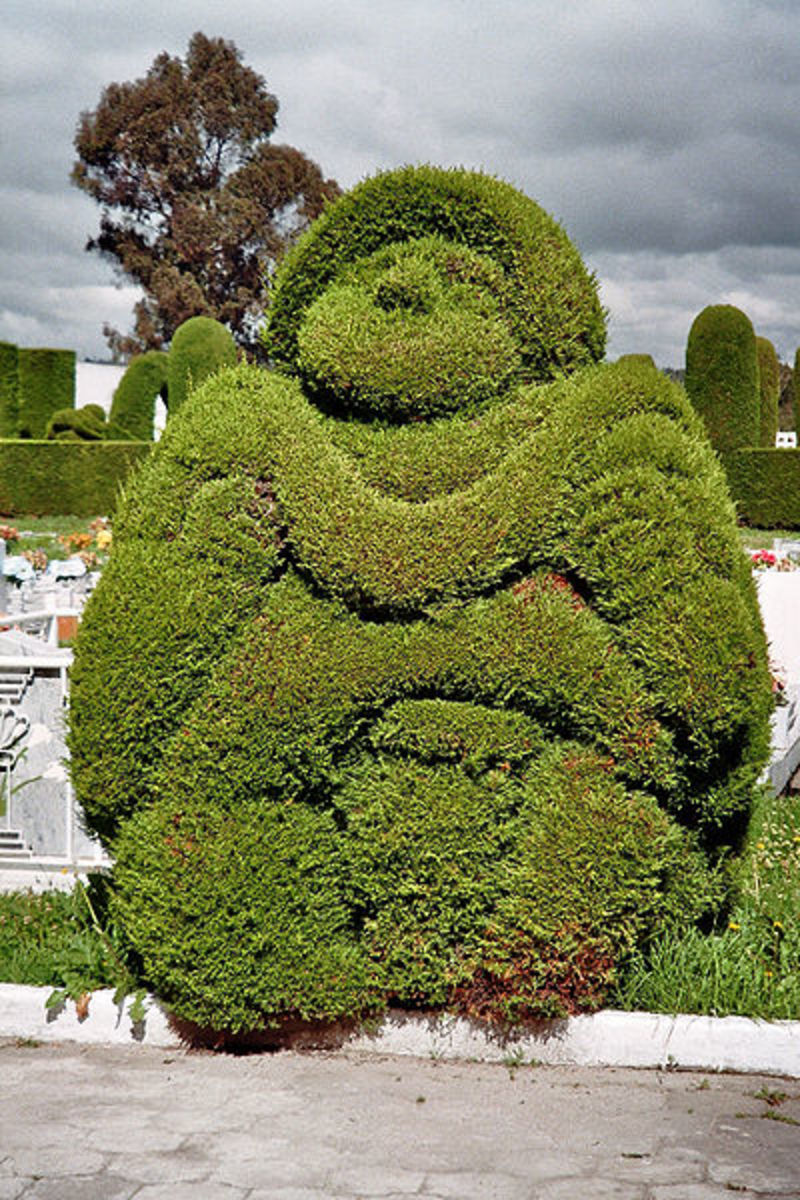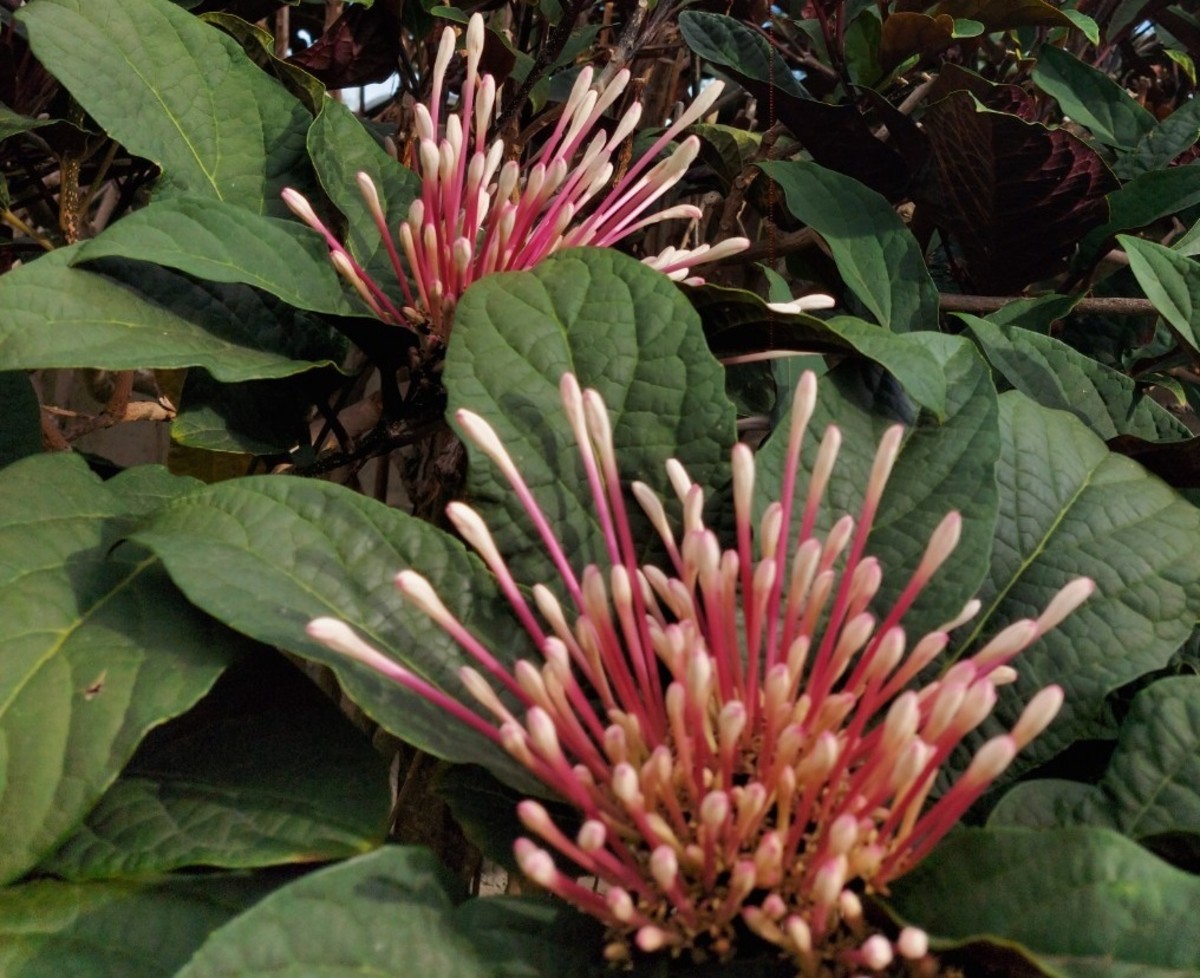Plant Native Shrubs Instead of Invasive Species: A List of Both Types
Invasive Rose of Sharon
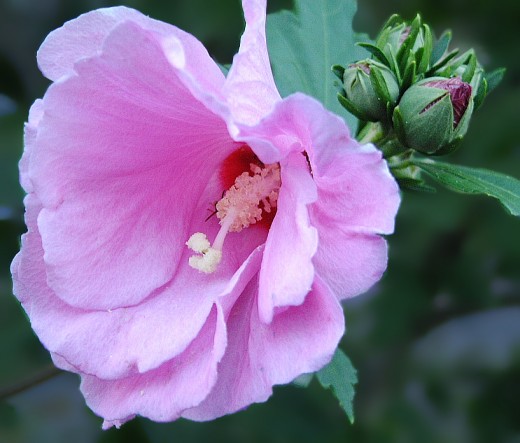
List of Native and Non-Native Shrubs
Strolling through my New York City neighborhood I get to enjoy the beautiful Rose of Sharon flowering shrub - one is right outside my window. I also had this pleasure when I strolled through my neighborhood in Seoul, S. Korea during the years I worked there. I remember thinking 'Seoul has the same flower we have back home.' But, how can both cities, more than 6,000 miles apart, have this same flower?
The Rose of Sharon (Hibiscus syriacus) is native to Asia and is the national flower of S. Korea - where it is known as the mugunghwa. However, it is an invasive species here in North America, having been introduced right before the 1600s, according to the Floridata website. (see photo below for the Rose of Sharon flower)
In fact many of the shrubs we have planted here are invasive.
What are invasive species and what are native species?
The U.S. government defines an invasive species, in this case shrubs, as plants not native to the ecosystem being considered. Additionally, by introducing non-native species, these plants can cause, or are likely to cause harm that is economic, environmental, as well as harmful to human health.
Native species, however, occur naturally in a particular ecosystem. In this case the shrub (or tree or plant) originated there without human help. Bear in mind, that plants growing in one part of the U.S. can be considered invasive in another part. This is because different regions of the U.S. are at different elevations, have different soil types and also different weather patterns.
How did invasive shrubs get into the U.S.?
Invasive plants are not an accident; they were brought here intentionally, according to the Brooklyn Botanic Garden. Additionally, about half of the most damaging invasive plants degrading natural habitats throughout the U.S., were brought here for horticultural purposes. Many are still being sold for quick growth and erosion control or simply to look beautiful in the landscape.
Highway departments in the U.S. have often sought quick growing invasive plants in order to establish rapidly growing ground cover, especially where the grounds slope.
What kind of damage is caused by invasive shrubs?
When invasive shrubs are planted in a new ecosystem, they may displace native plants by growing faster, taller, wider and then creating a shade cover over native species. This can disrupt the nutrient cycle of native plants. The results can have a devasting effect on food and homes for animals - which too often we forget about.
In dollars and cents, such damage caused by the use of invasive plants costs about $120 billion dollars each year. About 42 percent of threatened species on the U.S. List of Endangered and Threatened Species are now there because of nonnative species. (See link below explaining how animals are placed on the endangered species list).
Invasive shrubs can be hard to maintain and also hard to eliminate. Prevention is the best solution.
How can I easily tell if a shrub is native or non native/invasive?
An easy way to tell is by the name. The place of origin is sometimes part of the name. For example, the American Yew and Texas Ranger are native shrubs. The Japanese Barberry and English Hawthorn are not native, as the names indicates.
To provide food for wildlife (other than people) and for more information about native and invasive shrubs, see the lists below:
List of Native Shrubs
Alabama Snow-Wreath
American Beautyberry
American Snowbell
American Yew
Carolina Buckthorn (use in wildlife plantings)
Carolina Cherry Laurel
Florida Leucothoe
New Jersey Tea
Texas Ranger
Virginia Sweetspire
More Native Shrubs in Alphabetical Order
Antelope Brush
Apache Plume
Arborvitae
Bayberry
Bearberry/Kinnikinnick
Black Chokeberry
Black Haw
Bottle-Brush Buckeye
Bush Honeysuckle (avoid the other honeysuckles on the invasive list)
Button Bush
Climbing Hydrangea/Wood Vamp (hydrangeas also have health benefits - see link below)
Climbing Prairie Rose
Clove Currant
Cock-Spur Hawthorn
Coral Bean
Coralberry
Creeping Blueberry
Desert Olive (attracts wildlife)
Desert Willow
Devilwood
Fragrant Sumac
Gray Dogwood
Groundsel Tree
Hairy Manzanita
Highbush Blueberry (is a native food plant)
Highbush Cranberry (is edible and can be planted instead of the European Cranberry Bush)
Honey Mesquite
Indian Plum
Inkberry
Marlberry
Mountain Holly
Mountain Spirea
Ninebark
Oakleaf Hydrangea (hydrangeas also have health benefits - see link below)
Pinemat Manzanita
Red Chokeberry (attracts birds)
Red Osier Dogwood
Redroot
Rose Spirea
Rubber Rabbitbrush
Scarlet Elder (useful in wildlife borders)
Scarlet Mallow
Shiny-Leaf Meadowsweet
Silk Bay
Silky Willow
Silverberry (provides food for wildlife)
Silver Buffaloberry (birds and other animals like these berries)
Smooth Witherod
Sourwood
Southern Wax Myrtle
Spicebush
Sweet Pepperbush/Summersweet
Toyon (attracts wildlife)
Tree Anemone/Carpenteria
Tree Lupine
Twinberry
Waxflower/Cliffbush
Western Sweetshrub
Wild Coffee
Wild Lilac/Blue Blossom
Winged Sumac
Winterberry (provides food for birds and other wildlife)
Witch Alder
Witch Hazel
Witherod
Yaupon
Avoid These Invasive Shrubs
Brazilian Pepper Tree
English Hawthorn
European Cranberry Bush (plant the edible Highbush Cranberry instead)
Japanese Barberry
Japanese Spirea
Japanese Yew (replace with American Yew)
Russian Olive
Scotch Broom
Siberian Pea Shrub
More Invasive Shrubs in Alphabetical Order
Autumn Olive
Beach Naupaka
Buckthorn
Butterfly Bush
Chaste Tree
Cotoneaster
Edible Fig
Euonymus (Fortune's, Winged)
Heavenly Bamboo
Honeysuckle (Amur, Dwarf, Morrow's, Tartarian) - These familiar plants have invaded most of North America. Be sure to look for the Bush Honeysuckle, listed on the native list above.
Jetbead
Lantana
Multiflora Rose/Beach Rose
Myoporum
Privets (often used as hedges - there are seven types)
Rose of Sharon (has invaded New York through to Missouri, down south to Texas and Georgia, as well as Utah)
Shoebutton Ardisia
Tall Hedge Buckthorn
Tamarisk
Viburnum (Double-FIle, Linden, Siebold, Tea)
Wayfaring Tree
For more information about native and invasive trees and vines, see links below.
Native Trees/Native Vines
- Plant Native Trees Instead of Invasive Species: A Li...
My lovely New York City street is filled with towering trees. But unlike the easily identifiable oak and catalpa of my youth, many of these trees do not belong here in the U.S. They are an invasive species. Choosing to plant only native species has.. - Plant Native Vines Instead of Invasive Species Vines...
One of the most commonly grown vines in the United States is the English Ivy. As the name indicates, it is not native to the U.S. and is an invasive species. In fact, the English Ivy has affected all levels of forested regions, according to the...
Health Benefits of Hydrangeas
- Native Plants: The Hydrangea and its Many Health Ben...
Native plants are not only easier to grow and maintain but often have many hidden benefits. The hydrangea, for example, is native to the US, and has been used for ages for its wide range of health benefits....
